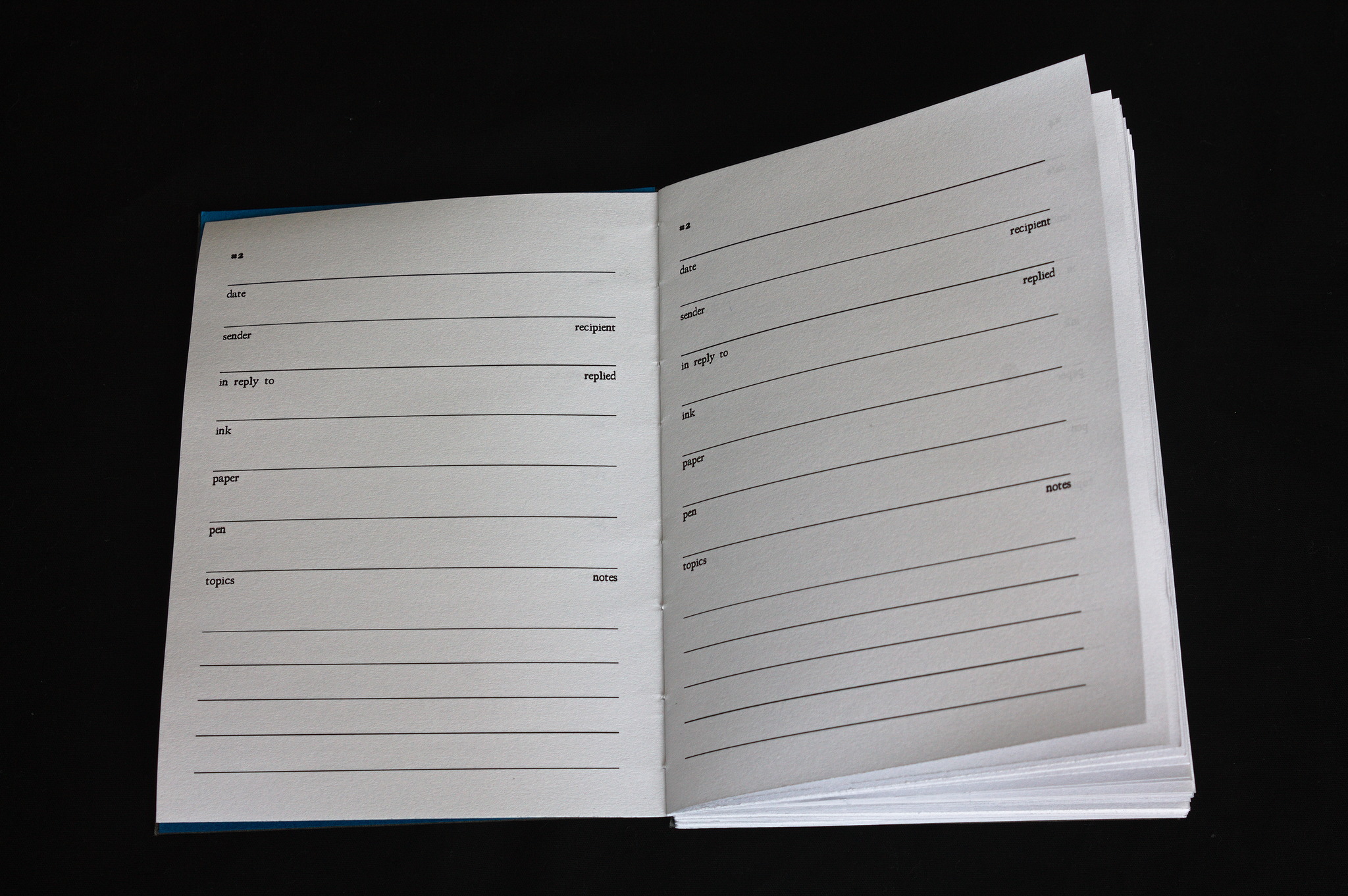Tags: madeof:atoms, madeof:bits

I write letters. The kind that are written on paper with a dip pen 1 and ink, stamped and sent through the post, spend a few days or weeks maturing like good wine in a depot somewhere2, and then get delivered to the recipient.
Some of them (mostly cards) are to people who will receive them and thank me via xmpp (that sounds odd, but actually works out nicely), but others are proper letters with long texts that I exchange with penpals.
Most of those are fountain pen frea^Wenthusiasts, so I usually use a different ink each time, and try to vary the paper, and I need to keep track of what I’ve used.
Some time ago, I’ve read a Victorian book3 which recommended keeping a correspondence book to register all mail received and sent, the topics and whether it had been replied or otherwise acted upon. I don’t have the mail traffic of a Victorian lady (or even middle class woman), but this looked like something fun to do, and if I added fields for the inks and paper used it would also have useful side effect.
So I headed over to the obvious program anybody would use for these things (XeLaTeX, of course) and quickly designed a page with fields for the basic thinks I want to record; it was a bit hurried, and I may improve on it the next time I make one, but I expect this one to last me two or three years, and it is good enough.
I’ve decided to make it A6 sized, so that it doesn’t require a lot of space on my busy desktop, and it could be carried inside a portable desktop, if I ever decide to finish the one for which I’ve made a mockup years ago :)

I’ve also added a few pages for the addresses of my correspondents (and an index of the letters I’ve exchanged with them), and a few empty pages for other notes.
Then I’ve used my a6_book.py script to rearrange the A6 pages into signatures and impress them on A4; to reduce later effort I’ve added an option to order the pages in such a way that if I then cut four A4 sheet in half at a time (the limit of my rotary cutter) the signatures are ready to be folded. It’s not the default because it requires that the pages are a multiple of 32 rather than just 16 (and they are padded up with empty pages if they aren’t).
If you’re also interested in making one, here are the files:

After printing (an older version where some of the pages are repeated. whoops, but it only happened 4 times, and it’s not a big deal), it was time for binding this into a book.
I’ve opted for Coptic stitch, so that the book will open completely flat and writing on it will be easier and the covers are 2 mm cardboard covered in linen-look bookbinding paper (sadly I no longer have a source for bookbinding cloth made from actual cloth).

I tried to screenprint a simple design on the cover: the first attempt was unusable (the paper was smaller than the screen, so I couldn’t keep it in the right place and moved as I was screenprinting); on the second attempt I used some masking tape to keep the paper in place, and they were a bit better, but I need more practice with the technique.
Finally, I decided that for such a Victorian thing I will use an Iron-gall ink, but it’s Rohrer & Knlingner Scabiosa, with a purple undertone, because life’s too short to use blue-black ink :D
And now, I’m off to write an actual letter, rather than writing online about things that are related to letter writing.